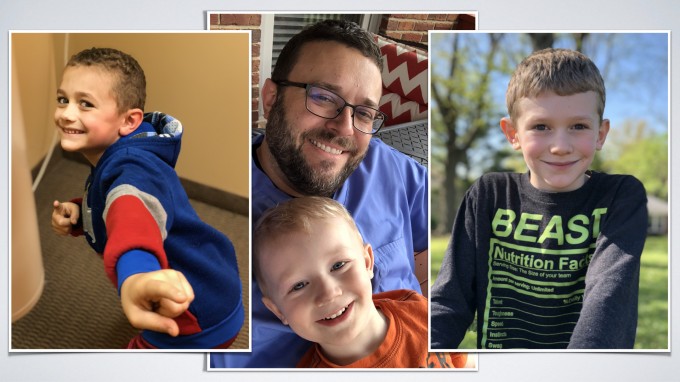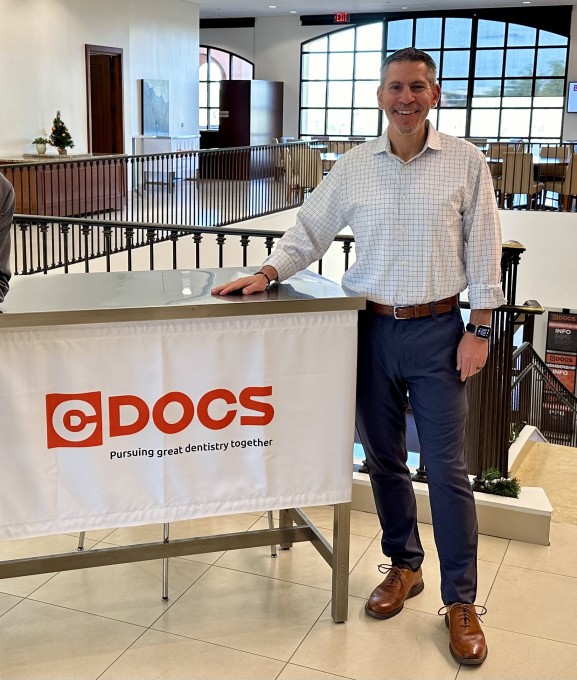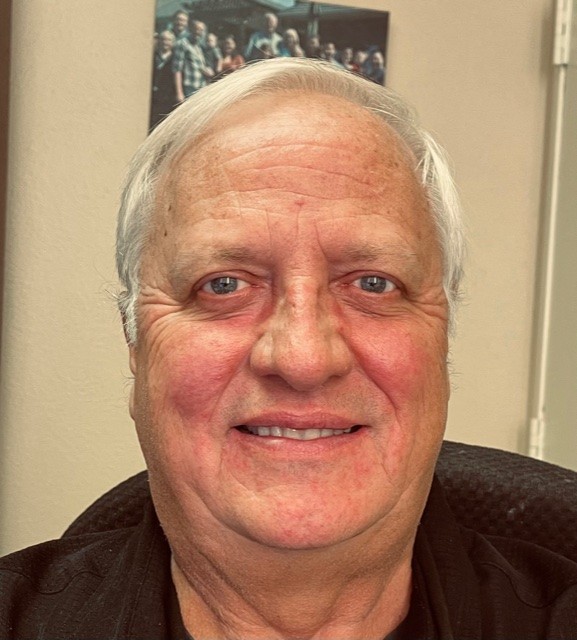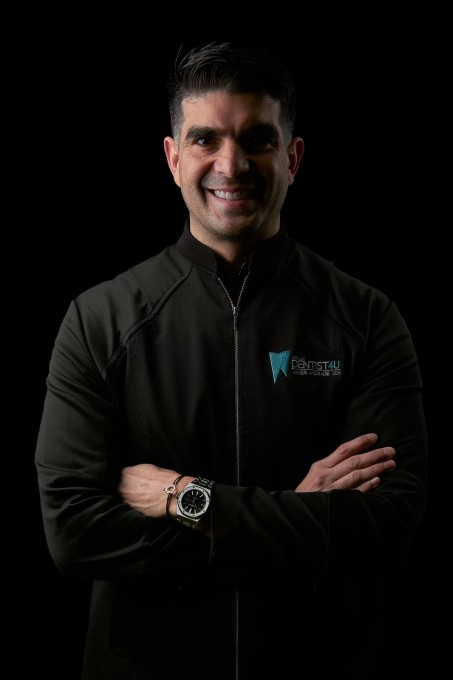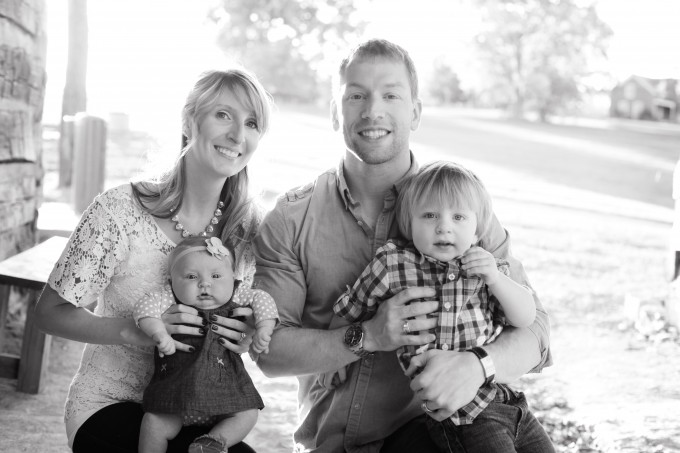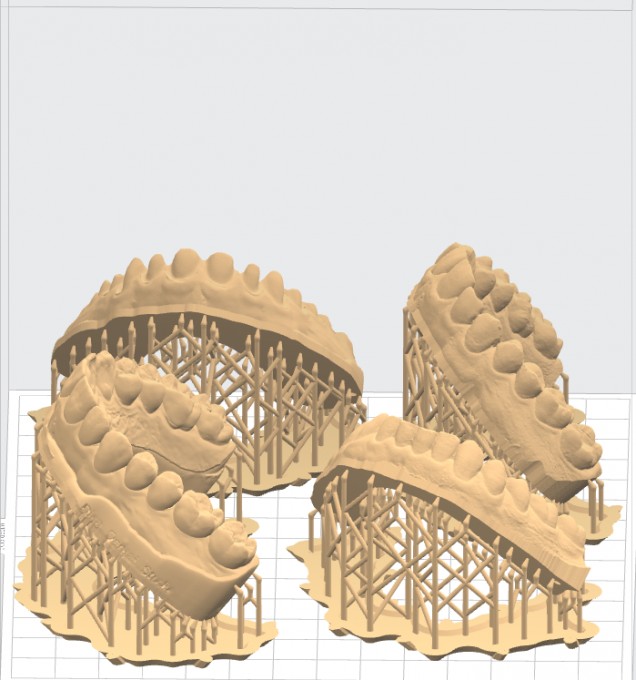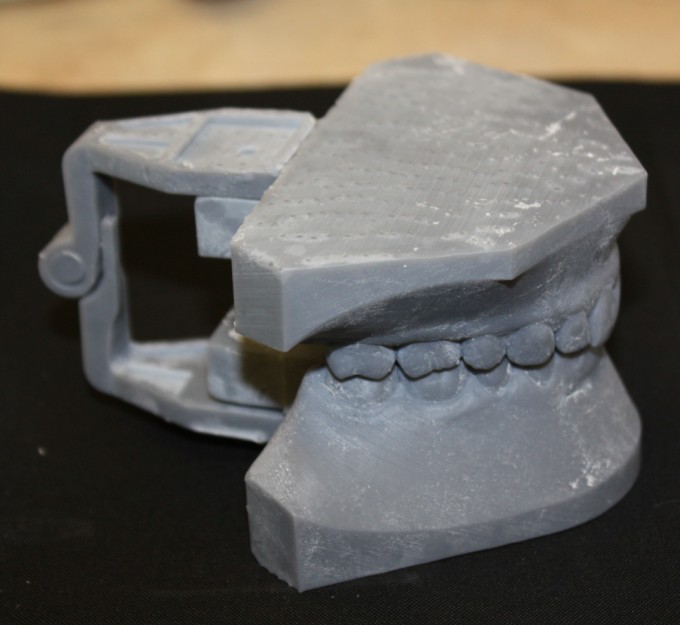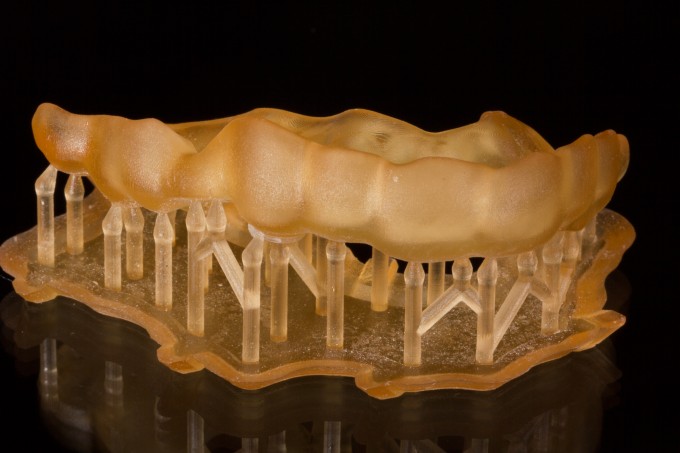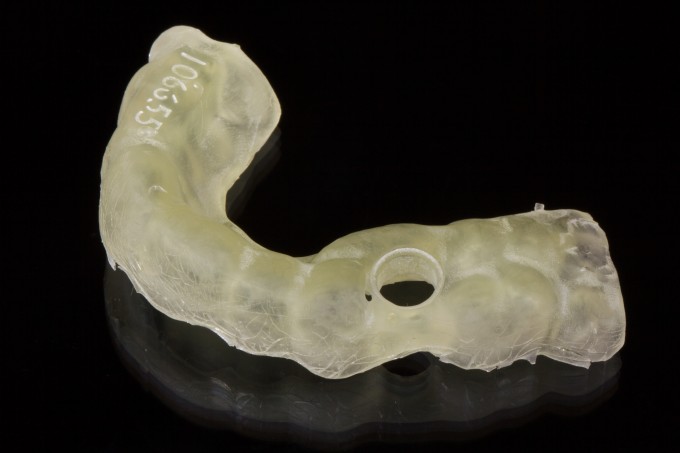3D Print Question
About to print my first 3D STL guide using formlabs 2. I have imported it and extruded it using videos that Mike posted to be able to print vertically. I noticed that when I imported the file into preform, even before extruding (so the original .stl given by lab), that this warning popped up - "Some loaded models are damaged and need repair." Should I ask preform to repair or to leave it alone? And what does this mean? Thanks for information.
It will add a weird little base to it. Print both ways at the same time and see how it turns out
Preform says this from time to time. I always hit repair and have never noticed that it does anything.
Another 3D print question- Daniel you might have the answer ? We have been doing itero scans for ortho long time. Started so could invisalign when Cerec did not work. We are getting the Cerec stl license. We have the Form2 printer and have been printing models, but we are having an issue with Itero and their scans/stl file. They want us to pay huge license fee to get the stl files here or become lab to get the files in another way. How do we get what we have already scanned and have a file just need be able to use and print it? We haved used exceed to get aligners STL files etc but just a straight simple retainer or NG we want to print
On 7/10/2017 at 7:30 am, Will Jones said...About to print my first 3D STL guide using formlabs 2. I have imported it and extruded it using videos that Mike posted to be able to print vertically. I noticed that when I imported the file into preform, even before extruding (so the original .stl given by lab), that this warning popped up - "Some loaded models are damaged and need repair." Should I ask preform to repair or to leave it alone? And what does this mean? Thanks for information.
Are you using the inspector in meshmixer??? Usually that means that there's missing data to be filled in the mesh. The repair option usually takes care of it.
Sorry Dave, no idea about Itero. Javier, I've found even after fixing holes with inspector in Meshmixer, you can still get that repair model in Preform. I say if it wants to fix it, go ahead![]()
Most all of the 3D printing CAD programs borrow the Repair function from NetFab. Or, I should say that the license it from them. Anyway, VERY common to get this error. And as Dan mentioned, it even occurs after inspecting on MM. Just approve the repair and review the model quickly on Preform. I'm yet to have a 'fix' that screwed something up. It's possible, but unlikely.
And another question -
I have cancelled the print once now because after a few hundred layers, there was nothing there (also, the light wasnt lighting up underneath the base). It keeps going through layers and nothing is being built. I restarted it and it's doing the same thing.
I pulled out the build platform and looked very closely. There is no resin cured at all. And no light was ever turned on like it was when i was making animals with grey resin. Any thoughts on what to do? Thanks.
Printing vertically can be tricky. If you don't get a completely flat base, the print will fail. If you want to be sure it prints ok, at least until you have a bit more practice, orient the model at an angle and have the software create supports.
Angled will definitely give you a little more accurace IMO... but it takes a lot longer. Also the resin will determine how long it will take. This print is going right now and is going to take around 11 hours...
Will, could you show us a screenshot of your build? Of even better yet, would you mind sharing the .form file? Then I can load it and help troubleshoot.
On 7/10/2017 at 2:45 pm, Mike Skramstad said...Angled will definitely give you a little more accurace IMO... but it takes a lot longer. Also the resin will determine how long it will take. This print is going right now and is going to take around 11 hours...
Mike,
Could you or whoever clarify when you would use which orientation? Angled is more accurate, vertical is more economical, but when would you use which application?
Models for aligners? Models for other appliances? Surgical guides?
Thanks
Diving into 3D printing today and watching videos, and I know it's just the tip of the iceberg. Sorry for the basic questions right now:
1) Vertical printing saves resin...is there an estimate on time savings? 20%...30%? Obviously I can squeeze a lot more models in to print but is there a limit when accuracy becomes a problem?
2) Is there a minimum resolution that I should be printing at?
3) Skramy mentions that printing vertically may not a little less accurate? Clinical relevancy for this or just an anecdotal observation?
4) Meshmixer is a little slow and buggy, but Baron and others mention NetFabb. What are the benefits if any of this program or should I stick with MM?
5) In the CDocs Videos about 3D printing, Mike talks about using InLab 16 to add bases. Can Premium software do this? Any negatives to adding the software to the CEREC or just stick with Chairside and use Meshmixer?
Thanks!
Dan
Thanks Hiroshi-
The only thing that I will add is that we as CEREC users need a proper model building software. Meshmixer of course works fine and is easy for certain applications... but I would like to see a more comprehensive solution
Easier way to put bases on models for 3D printing like you described for InLab 16. This is for Kris's machines so I'm trying to streamline her workflow for her office team to image and print so they can get away from impression materials.
Dan,
I don't think you can add bases in the premium software. Easiest way is to scan in ortho software and put a base on in that software, but the real advantage of ortho is to be able to print articulated models. This print took 9 hours and used a ton of resin. Honestly, Meshmixer only takes a minute to add a base and really isn't buggy at all for this. If you want a quick model, at 100 microns, you could probably get the print time down to a little over an hour.
I agree with Michael, it would be really nice to have some dental model specific software. I appreciate your help and video on how to use Meshmixer to build a base for the model. We did our first couple cases this week with 4.5 and exported our own stl into Formlabs2. My assistant Meghann followed your video and got a very nice model with a base on it. Pretty cool stuff!
On 7/16/2017 at 3:43 pm, John Lee said...How do we convert the CEREC scan to an STL file? Infinident?
Once you go online with 4.5 you can request a STL export license from PTC. With this license you can export models from chairside or cerec Ortho
Peter, I called PTC... they told me that they will not release 4.5 until later. They will release it in batches... unless you are a mentor. So, until then... is there another route to convert the file to a STL?
Daniel,
How do you get this type of articulated model? This would really help me in missing posterior cases. Thanks.
Will. You will have to either build an articulaor in mesh mixer or there are a few that can be purchased. So far I would say that the ines I have printed have been flimsy. I am going to try to print in a different material and see if it works out better. For full arches I do not have confidence in the plastic articulaors but that doesn't mean you can't print and mount on a real articulator
Peter,
Yea I was wondering if the articulator that Dan built was decent enough to show the lab a general overview. That is my goal. I have a few bilateral posterior missing teeth cases that are full all-on-x implant immediate load cases that I wanted the lab to see a general overview of his bite. i was hoping this articulator was decent enough to show them that. I will still be taking traditional impressions and bites.
I would consider this articulator similar to what the lab may send you back with a triple tray impression. It can help hold the models together, but that's it.
Will, I sent you a PM with the site to buy this articulator. It's $10 and a lab guy designed it. I'll be making a video soon on how to put this together in Meshmixer. Another option is to print models and leave the supports on. Then do a traditional bite and mount to a traditional articulator using the printed supports to lock in the plaster. The printed articulator is just a quicker rough way to do it.
Has anyone put a price tag on this? Maybe a per articulated model cost to weigh out ROI. As a former engineer (a true card carrying geek) I'm getting very tempted to jump into the print world now even though I'm not using a bunch of printed models currently. I have a lab that will accept my Ortho scans and deliver articulated models for about $50. I've thought of getting ortho software and using a BioStar Mini thermoformer and doing my own aligners for simple cases. This would justify the printer a little more maybe, but just wondered if someone has a good feel for ongoing costs.
On 7/16/2017 at 5:58 pm, John Lee said... Peter, I called PTC... they told me that they will not release 4.5 until later. They will release it in batches... unless you are a mentor. So, until then... is there another route to convert the file to a STL?
John the East Coast is next after the Midwest rollout so it should be pretty soon.
Dan...
Chomping at the bits.... Got my FormLabs 2 and stalling my HiOssen Implant patients from getting their crowns...
On 7/18/2017 at 9:08 pm, John Lee said...Dan...
Chomping at the bits.... Got my FormLabs 2 and stalling my HiOssen Implant patients from getting their crowns...
For the STL export from Chairside it is only for models. In order to have guides printed ( As Dan and Mike have shown) you will need a lab to convert your scans, do design of CG 2, then they will send the file back to you to print. This can be accomplished with 4.4 so there is no need to wait for 4.5
Frankie @ AA dental designs
and
Jay- Winter Spring Dental Lab
These are 2 good sources for this
The stl from the print that I showed was from Sicat. Digital Guide. I like using this the most (even though a little more spendy) because you get a second set of eyes on your plan to minimize mistakes and I can use my surgical guide kits without the limitations of the CG2 hole size.
Same as normal. Choose digital guide but do not send to Burbank... just request the .stl. Cost is $120
Here it is John,
http://www.aadentaldesign.com/
You will find their phone number. Give them a call. They will guide you to how set you up on the cerec connect.
On 7/18/2017 at 7:54 pm, Mike Skramstad said...Here you go:
If you do implants, worth it for sure:
Are we supposed to wash and cure before or after removing supports? Does it matter?
I leave supports on until after washing and final cute. Material is some what soft immediately out of printer
I leave the supports on for guides until after final cure. On models, I remove them before final cure.



